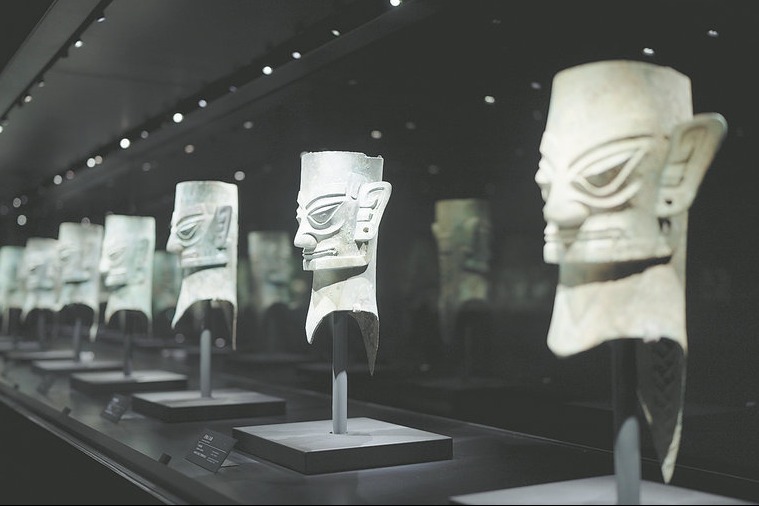Through the years
By Wang Kaihao | China Daily | Updated: 2017-05-23 07:34
 |
| Splendor and Beauty: The Archaeological Finds in Recent 20 Years in China displays 360 sets of artifacts unearthed from around the country. A model of the Ashoka Pagoda is one of the biggest draws at the show. |
Key exhibits recommended by curators
A bronze drum decorated with three cavaliers was unearthed in southwestern Yunnan province in 1992. The item, dating back to the Han Dynasty (206 BC-220), vividly presents the lives of ancient warriors and shows the combination of aesthetics and functionality. Bronze drums symbolized noble power back then.
・ A model of the Ashoka Pagoda was unearthed in 2010 in an underground Buddhist temple in Nanjing, capital of Jiangsu province. Being decorated with gold, silver and 452 gems, the 1.17-meter-high artifact from the Song Dynasty (960-1279) is the largest Ashoka pagoda in China.
・ A gilded copper door knocker was unearthed in 2013 in the tomb of Emperor Yang of the Sui Dynasty (581-618) in Yangzhou, eastern Jiangsu province. As a funeral object, it belonged to the imperial palace, and is said to have expressed the emperor's wish to continue his daily life even after death.
・ A gold cup decorated with the head of chi, a sacred animal resembling the mythical dragon, was found in southwestern Guizhou province in 2014.
The item from the mid-13th century depicts a dynamic scene of the sacred animal flying between ocean and sky. It is a representative gold ware of its time, and reflects a powerful regime in the area.
If you go
9 am to 5 pm, through Aug 27. Entrance until 4 pm (closed on Mondays). Exhibition Hall B, the first floor, Capital Museum, 16 Fuxingmenwai Avenue, Xicheng district, Beijing. 010-6339-3339. www.capitalmuseum.org.cn. Entry ticket is free of charge, but online reservation is needed.
























